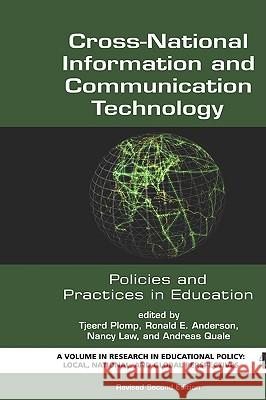Cross-National Information and Communication Technology Policies and Practices in Education (Revised Second Edition) (Hc) » książka
Cross-National Information and Communication Technology Policies and Practices in Education (Revised Second Edition) (Hc)
ISBN-13: 9781607520443 / Angielski / Twarda / 2009 / 748 str.
Cross-National Information and Communication Technology Policies and Practices in Education (Revised Second Edition) (Hc)
ISBN-13: 9781607520443 / Angielski / Twarda / 2009 / 748 str.
(netto: 610,00 VAT: 5%)
Najniższa cena z 30 dni: 635,25
ok. 30 dni roboczych
Bez gwarancji dostawy przed świętami
Darmowa dostawa!
A volume in Research in Educational Policy: Local, National, and Global Perspectives Series Editor Kenneth K. Wong, Brown University This compendium of papers documents educational ICT policies and practices in 37 countries, making it a valuable resource for understanding and comparing ICT-related national policy developments in education. We believe that this work offers a unique in-depth examination of the trends within major education systems and how they have adapted to and taken advantage of the challenges and opportunities posed by the new information and communication technologies. A special feature of this edition is that it allows for interesting comparative analyses of sub-groups of countries, as many Asian, European Union, and former eastern-European countries, as well as the United States and Canada (among others), are included in the book. But it allows also for other than regional comparisons given that a number of newly industrialized countries (such as Brazil, Chile, Malaysia, and South Africa) are represented in this book, together with many OECD countries. This book is the result of the effort and hard work of the contributing authors, many of whom are the National Research Coordinators for the Second IT in Education Study (SITES) conducted under the auspices of the International Association for the Evaluation of Educational Achievement (IEA) for which the data collection took place in 2006. The structure of this book is similar to the previous edition published in 2003 in that it contains both country chapters and summary chapters. The country (or education system) chapters demonstrate the rich variation in policies and strategies on ICT in education around the world. To allow for comparisons across countries, all authors followed an outline consisting of the following main topics: the structure and nature of their educational system; ICT-related policies (illustrated with examples); special issues (such as equal opportunities or problems with sustainability); current trends in policies and practices; and expectations for the future. There are clear differences between countries in economic condition, information technology development, and historical background. In essence, the approach followed resulted in a set of country papers that show a number of commonalities but also reflect the cultural richness and variation.











